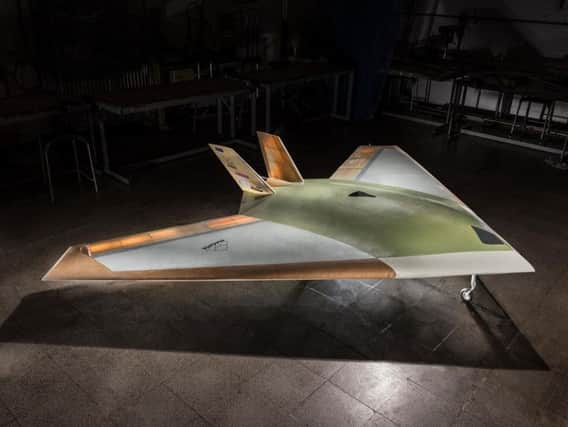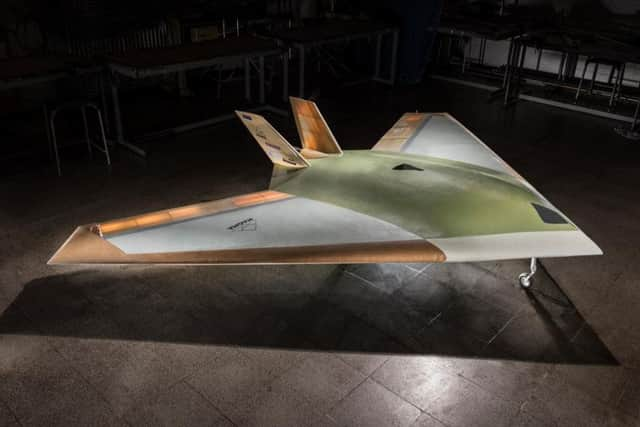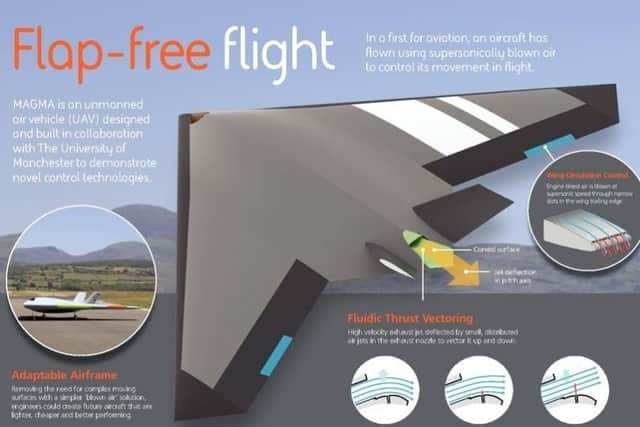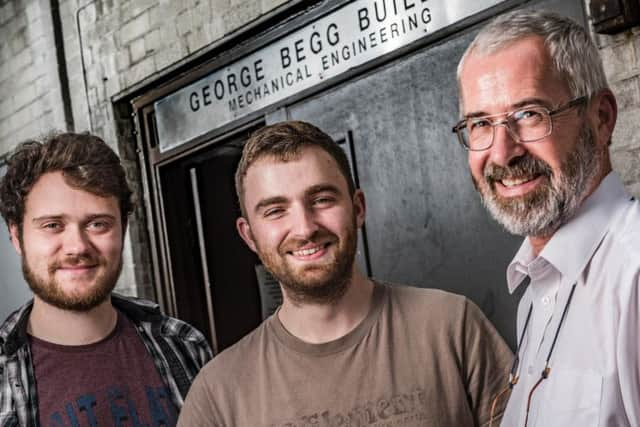BAE Systems engineers in aviation first with jet air controlled drone


For the first time, an aircraft has been steered in flight using supersonically blown air, removing the need for complex, movable flight control surfaces such as flaps.
In a series of ground-breaking trials in the skies above Wales, BAE Systems’ MAGMA unmanned aerial vehicle showed two innovative flow control technologies which could revolutionise future aircraft design.
Advertisement
Hide AdAdvertisement
Hide AdIt could see future aircraft being made even more stealthy without large moving surfaces which cause a big radar image.


They will also be lighter without the complex technology needed to move the flaps.
MAGMA has been developed by researchers at The University of Manchester who led the project. working with Samlesbury engineers.
The thrust vectoring exhaust and wing circulation control devices were made using the latest additive manufacturing capabilities (3D printing) at the BAE Systems’ Samlesbury site.
Advertisement
Hide AdAdvertisement
Hide AdJulia Sutcliffe, Chief Technologist, BAE Systems Air, said: “MAGMA is a great example of how collaborating with bright minds at British universities can deliver ground-breaking research and innovation.


"Our partnership with The University of Manchester has identified cutting-edge technology, in this case flap-free flight, and turned what began as a feasibility study into a proven capability in just a number of months.
“It demonstrates how STEM can be applied in the real-world and I hope the success of these trials inspires the next generation of engineers and scientists.”
Bill Crowther from the University of Manchester said: “We are excited to have been part of a long-standing effort to change the way in which aircraft can be controlled, going all the way back to the invention of wing warping by the Wright brothers.
Advertisement
Hide AdAdvertisement
Hide Adt’s been a great project for students to be part of, highlighting that real innovation in engineering is more about finding practical solutions to many hundreds of small technical challenges than having single moments of inspiration.


“The partnership with BAE Systems has allowed us the freedom as a university to focus on research adventure, with BAE Systems providing the pathway to industrial application. We made our first fluidic thrust vectoring nozzle from glued together bits of plastic and tested it on a hair drier fan nearly 20 years ago.
"Today BAE Systems is 3D printing our components out of titanium and we are flight testing them on the back of a jet engine in an aircraft designed and built by the project team. It doesn’t get much better than that.”